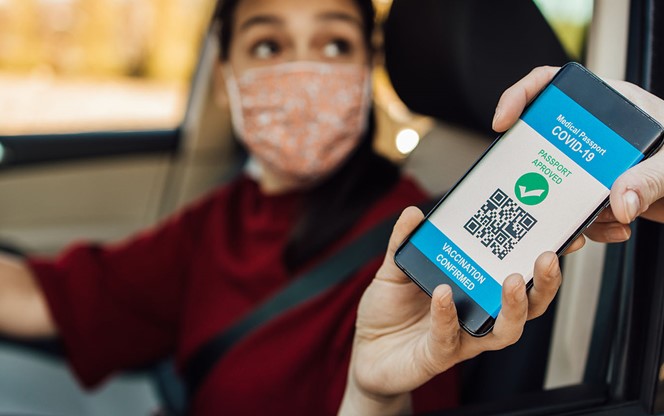

Archived Insight | November 9, 2021
The Department of Health and Human Services (HHS), the Department of Labor and the Department of the Treasury (collectively, the Departments) recently released the second part of an interim final rule (IFR) implementing Part II of the federal No Surprises Act, enacted as part of the Consolidated Appropriations Act, 2021. Comments on the IFR are due by 5 pm (EST) on December 6, 2021.

Share this page
Most group health plans and health insurers are subject to the No Surprises Act for plan years beginning on or after January 1, 2022. The No Surprises Act prevents surprise billing of patients who receive emergency services in the emergency department of a hospital, at an independent freestanding emergency department and from air ambulances. In addition, the law protects patients who receive certain non-emergency services from an out-of-network provider at an in-network facility.
Once the No Surprises Act takes effect, patients will only be responsible for paying in-network cost sharing for emergency services, regardless of whether the services were rendered at a participating or nonparticipating provider or facility. Patients cannot be balance billed by the provider or facility for emergency services. (We summarized the No Surprises Act in our January 14, 2021 insight, “New Law Requires Transparency and Prohibits Surprise Billing.”)
Part 1 of the No Surprises Act IFR, which was released on July 13, 2021, addressed patient rights and how to calculate the Qualifying Payment Amount (QPA), generally defined as the plan’s median in-network contracted rate. (We summarized that guidance in our July 14, 2021 insight, “Rule on the No Surprises Act Covers Provider Payments.”)
Part II of the IFR details what happens after the participant’s cost-sharing is complete and they are protected from balance billing and how the plan resolves its claim with the out-of-network provider or facility. It covers:
Health plans must send an initial payment or a notice of denial of payment to the provider or facility within 30 calendar days of the out-of-network provider sending the bill. The Part I IFR stated that the 30-day time period does not begin until the claim has sufficient information for the plan to process it. The plan must send certain information with the initial payment or notice of denial, including:
After the initial payment or notice of denial is sent, either party may request an open negotiation period in writing using a standard Open Negotiations Notice (ONN). During that time, the parties can agree to the payment amount.
If the negotiation does not result in agreement, either party may initiate the independent dispute resolution (IDR) process by submitting a Notice of IDR Initiation to the other party and to the Departments. The notice must be submitted using a standard form during a four-business day period beginning on the 31st business day after the start of the open negotiation period. Submissions will be made on a federal IDR portal.
The Notice of IDR Initiation must include the relevant QPA, the services at issue and the initiating party’s preferred certified IDR entity. The parties may use the IDR entity selected by the initiating party, or the other party may object to the choice of IDR entity. The process must be complete in three business days.
Parties may object to the choice of IDR entity and may oppose the IDR entity if there is a conflict of interest. If the parties cannot agree, the federal government will select an IDR entity.
The parties may continue to negotiate after the IDR process has begun. However, within 10 business days of selecting an IDR entity, the parties must submit their offer amount to that entity. The IDR entity must select one offer within 30 business days.
When making a decision about the payment amount, the IDR entity should select the offer that is closest to the QPA, unless the entity determines that credible information submitted by either party clearly demonstrates that the QPA is materially different from the appropriate ONN rate. In that case, the IDR entity must select the offer that it determines best represents the value of the items or services.
Among the factors that the IDR entity may consider include:
In addition, there are factors that may not be considered as part of the IDR process, including:
However, if the QPA is calculated using contracted rates that are expressed as a proportion of rates payable by Medicare, the IDR still must consider the QPA.
There are two fees related to the IDR process. First, an administrative fee is charged when IDR entity is selected. That fee is $50 in 2022. Second, the parties must pay the IDR entity a fee at the time offer is submitted. Those amounts are set by the IDR entity, but must be in the following range:
All fees are paid to the IDR entity. The entity sends the administrative fee to the government. The IDR entity will keep the fee remitted by the losing party and refunds the prevailing party its fee within 30 days.
Plan sponsors should determine how their service providers will pay out-of-network claims covered by the No Surprises Act and how the IDR process will be conducted on their behalf.

Health, Compliance, COVID-19

Health, Compliance

Compliance, Health
This page is for informational purposes only and does not constitute legal, tax or investment advice. You are encouraged to discuss the issues raised here with your legal, tax and other advisors before determining how the issues apply to your specific situations.
© 2026 by The Segal Group, Inc.Terms & Conditions Privacy Policy Style Guide California Residents Sitemap Disclosure of Compensation Required Notices